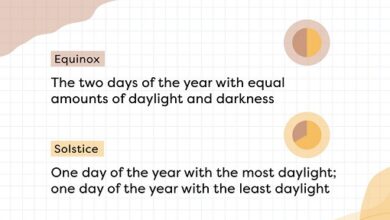Main memory of computer components types and functions
Main memory is the part of the computer where software applications, the operating system, and other information are stored so that the central processing unit (CPU) has direct and quick access when needed to perform tasks.
It is described as the computer’s internal memory. The word “primary” is used to demarcate it from peripheral storage devices. It is also called random access memory (RAM) as the CPU can immediately jump to any sector of memory without having to run that process as a sequence.
RAM is one of the fastest types of memory. Allows data to be read and written. However, when you shut down your computer, everything on it is wiped out.
The computer can only manipulate data that is in main memory. Therefore, every program executed and every file accessed must be copied from a storage device to main memory.
Components
Memory modules can be of various sizes and with different pin configurations.
YES
It stands for “Individual online memory module”. A SIMM is a small sheet with a large number of memory chips. SIMMs use a 32-bit bus.
The original SIMMs had 30 pins or connectors, which are metal contacts that connect to the motherboard. However, the new SIMM chips have 72 pins.
Newer processors require a 64-bit memory bus, so DIMM is best.
DIMM
Stands for “Online dual memory module”. A DIMM is a small board that contains memory chips. It uses a 64-bit bus for memory whereas a single in-line memory module (SIMM) only has a 32-bit path.
This allows DIMMs to transfer more data at the same time. Since DIMMs have faster data transfer capabilities than SIMMs, they have almost completely replaced them.
DIMMs come in 168-pin configurations, but some DIMMs have up to 240 pins.
SO-DIMM
Stands for “Small Cabinet Inline Dual Memory Module”. Most desktop computers have plenty of room for RAM chips, so memory module size is not a concern.
However, with the arrival of laptops, the size of memory modules became very important. For this reason, SO-DIMMs were designed.
The size of an SO-DIMM is only 50% of the size of a DIMM. This facilitates flexibility when designing memory for this type of computer.
SO-DIMMs initially had 72 connectors and data transfers were 32-bit. However, current SO-DIMMs typically have 144 pins, which makes it possible to do the same 64-bit transfers as a full-sized DIMM.
Types
Dynamic Random Access Memory (DRAM)
It is the type of main memory used in a computer. Bits of data are stored in a memory box, which consists of a small capacitor and a transistor.
The capacitor can be in a charged or discharged state. These two states serve to symbolize the two values of a bit, which are zero and one.
However, the electrical charge in the capacitors is slowly lost. To solve this, DRAM needs to have an external circuit to refresh the memory, repeatedly copying the information contained in the capacitors to replenish its initial charge.
So DRAM is constantly replenishing all data stored in memory. Update information by sending millions of pulses per second to the memory cell. This updating process is the defining characteristic of dynamic random access memory.
DRAM is unstable memory because the information it contains disappears immediately when the power is cut off.
Static Random Access Memory (SRAM)
It is a semiconductor memory that uses a flip-flop enclave circuit to store each bit. It is commonly used in integrated devices as a memory source. It is faster and more expensive than DRAM.
Information stored in SRAM does not need to be refreshed continuously. In this memory, data is set up as a “still image”, until it is deleted when the power is disconnected or written to it.
Therefore, SRAM when not in use is more efficient and less energy dense. In that sense, it is a better choice than DRAM for certain uses, such as cache memory located on CPUs.
On the other hand, the density of DRAM makes it a better alternative to main memory.
Functions
Main memory provides eventual storage of information requested by the computer. Instead of having to search the hard disk whenever some data is needed, the RAM is temporarily stored with the usual information, making it quicker to find it.
When the computer is turned off, all data in RAM is erased, leaving room for new data when the computer starts up again.
When the microprocessor finishes executing a set of instructions and prepares to perform the next task, it gets the necessary data from RAM.
computer speed
Having an adequate amount of RAM has a direct result on your computer’s speed.
If a system does not have enough main memory to be able to run its applications, it will need to ensure that the operating system creates additional memory resources on the hard disk by “swapping” data.
However, when the processor needs to get data from the hard drive instead of RAM, it slows down the computer’s performance.
main uses
– Storage of a copy of the main systems that control the general functioning of the computer. This copy is loaded into RAM when the computer is turned on and remains there as long as the computer is turned on.
– Temporary storage of a copy of an application‘s instructions, which the central processing unit (CPU) must retrieve for interpretation and execution.
– Temporary storage of information that has been entered from an input device. This is until the application requests that this data be passed to the CPU for processing.
– Temporary storage of information produced as a result of processing, until the application requests that this data be used again in subsequent processing or transferred to an output device or storage device.




